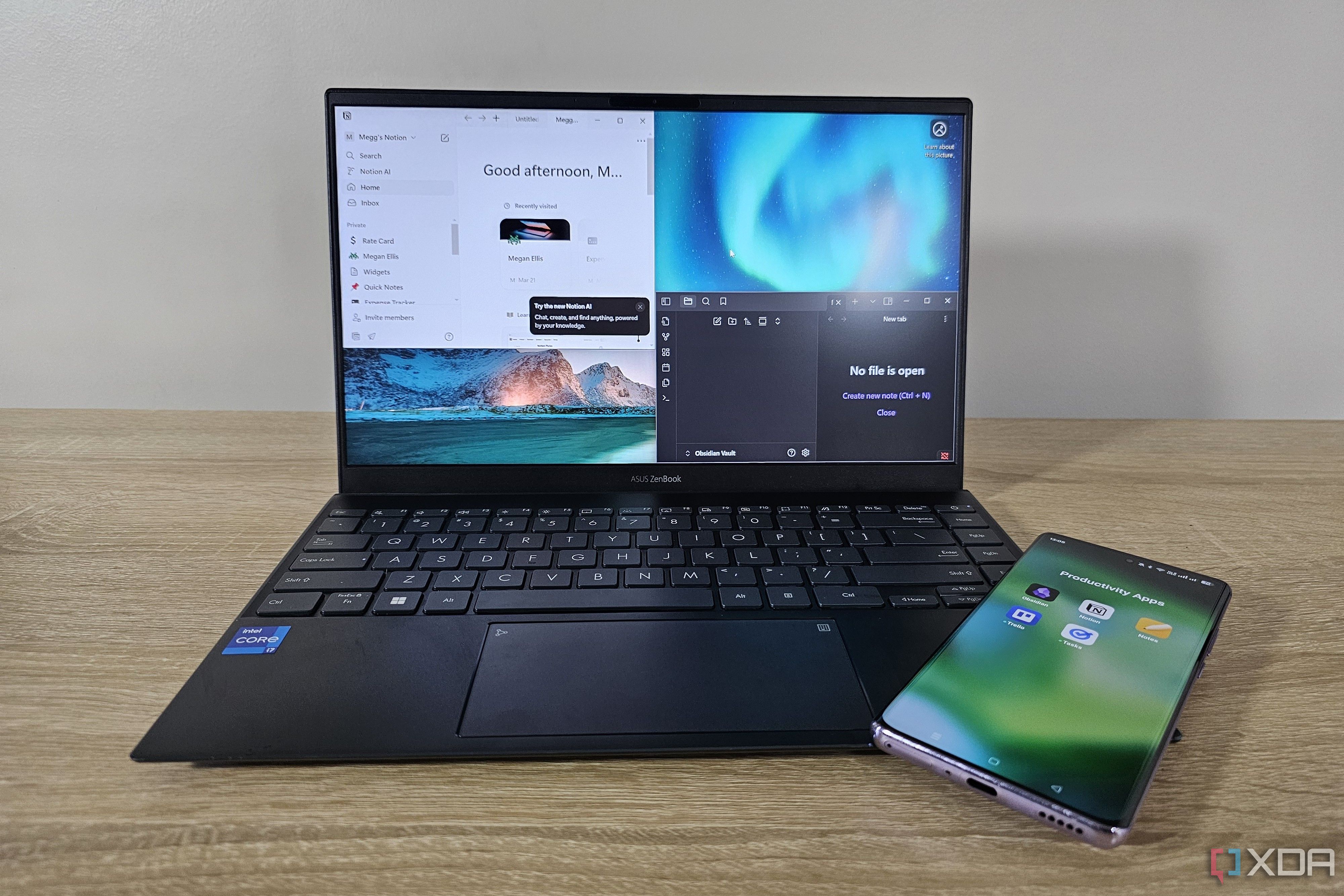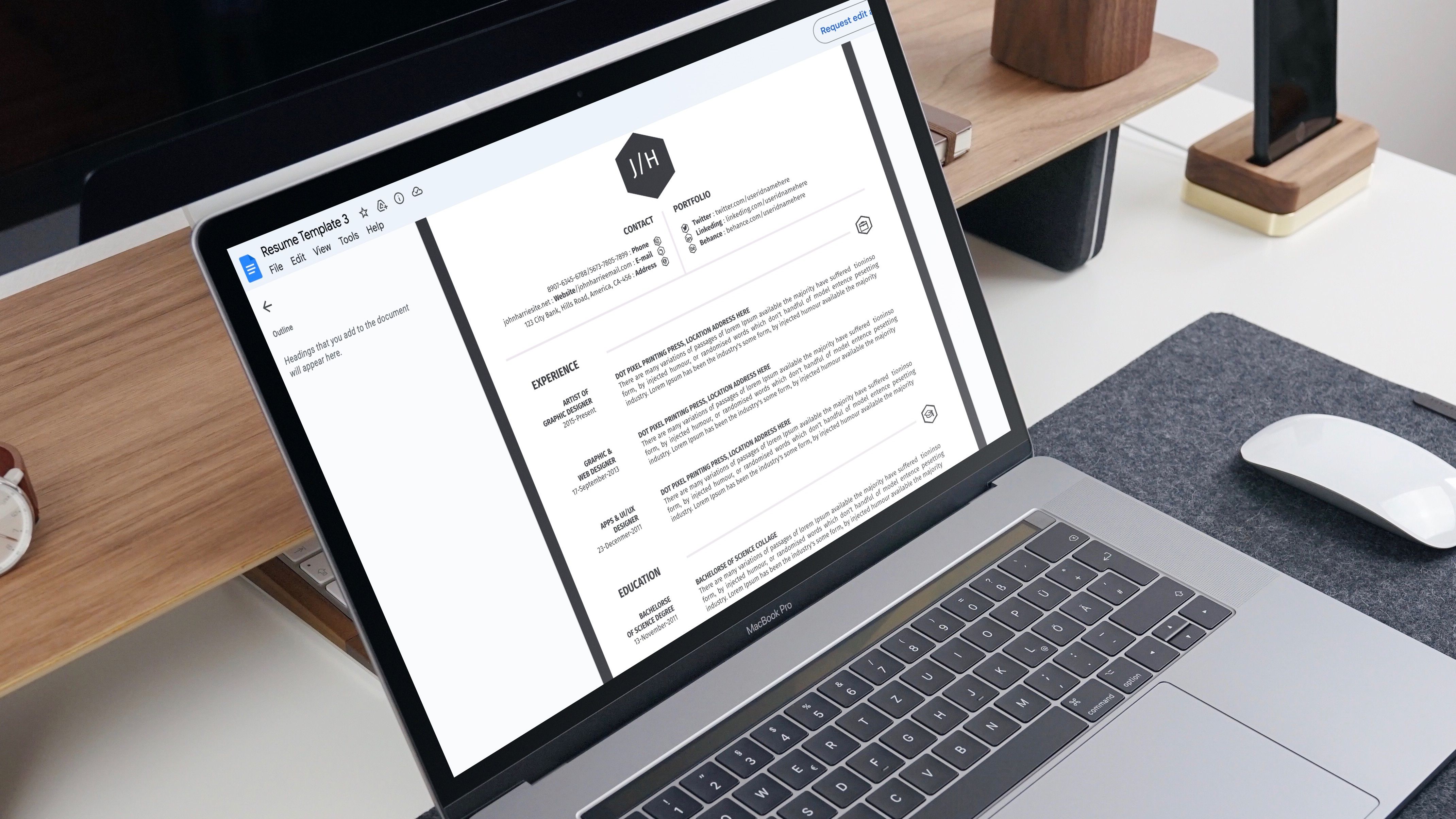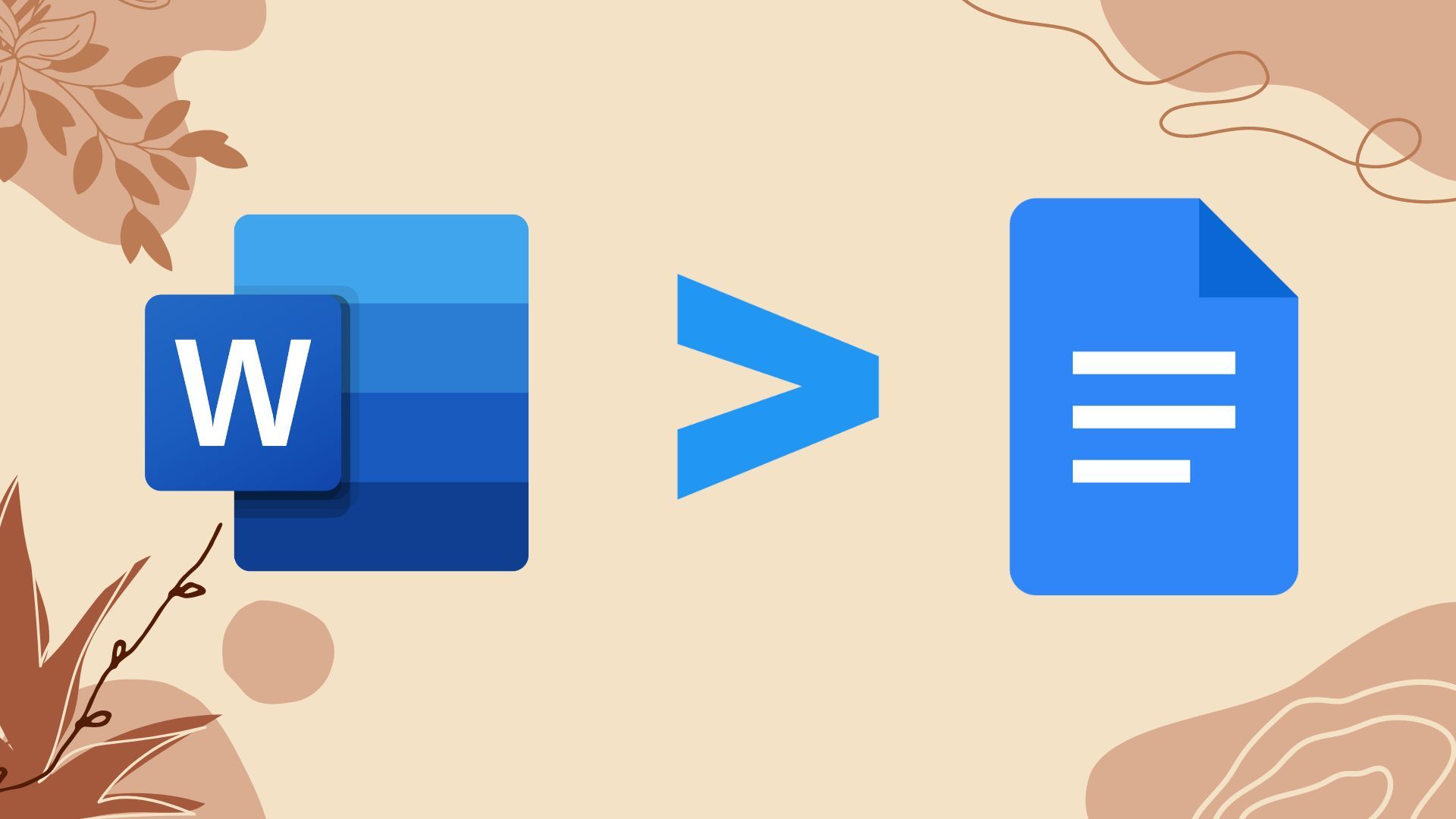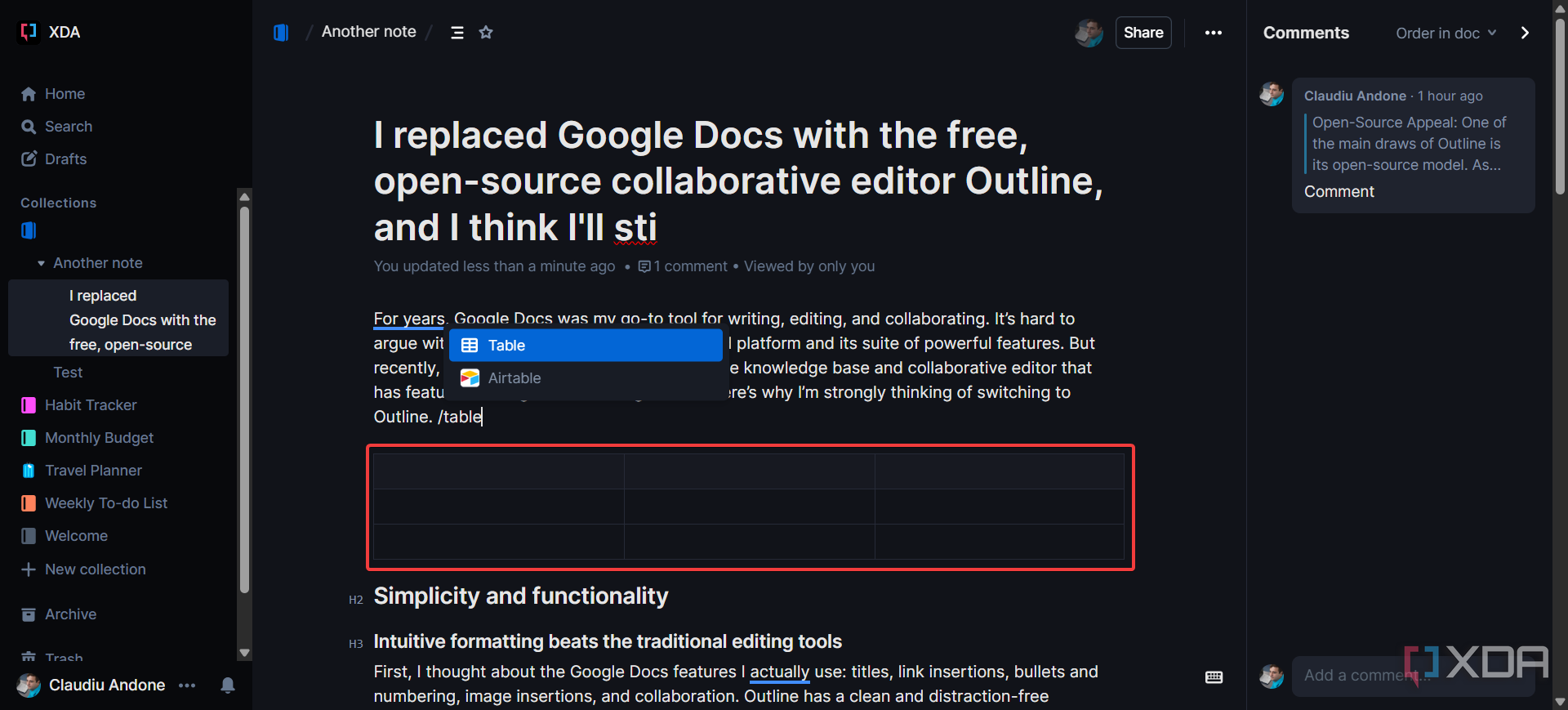For years, Google Docs was my go-to tool for writing, editing, and collaborating. It’s hard to argue with the convenience of its cloud-based platform and its suite of powerful features. But recently, I tried Outline, a free and open-source knowledge base and collaborative editor that has features rivaling those of Google Docs. Here’s why I’m strongly thinking of switching to Outline.

Related
5 reasons Outline is better than Notion for most people
Simplicity and functionality
Intuitive formatting beats the traditional editing tools
First, I thought about the Google Docs features I actually use: titles, link insertions, bullets and numbering, image insertions, code blocks (sometimes), and collaboration. Outline has a clean and distraction-free interface, making it a joy to write in. At the same time, it supports markdown, rich-text editing, and seamless embedding of images and links. It’s minimalist in design but mighty in capability.
It doesn’t have the classic formatting menus, but they are embedded directly in the contextual function. Just type / and you will instantly get the title options, along with bullets and numbering, as well as image or video insertion.
Then, if you highlight any character or text, you get additional styling options, including the link insertion option. They are all there! No need to grab your mouse and click on other menus.

Related
6 reasons you should ditch Google Docs, and what you should use instead
Ditch the generic word processor for a more secure, feature-rich experience.
Smooth integration with Slack
Collaboration is right there
I’m obviously subjective, but Outline’s integration with Slack weighs a lot in my choice. Right from the start, I logged into Outline with my Slack account. Then I added my workspace and included Outline in my Slack app. In 2 minutes, the integration was complete, and I could search and include my notes/articles into any Slack channel using the /outline command. It’s that simple!
I mentioned Slack because that’s relevant to me, but you can also integrate it with Loom and Figma for the same outcome. Outline also supports productivity integrations with Google Analytics, GitHub, Webhooks, and Zapier if you need them as well.

Related
6 reasons Microsoft Word is better than Google Docs
Unmasking Word’s hidden advantages over Google Docs
No compromises on privacy
Google is not the most trustworthy document-sharing partner
With Google Docs, my documents are tied to Google’s ecosystem, and while their security measures are strong, there are still concerns about data privacy and corporate oversight. Outline gave me the option to self-host, meaning I could take full control over where my data resides and who has access to it.
Additionally, Outline supports team-based workflows, document versioning, and real-time editing. And because I can host it on my own server, I can ensure that my collaborative workspace is private and secure. Honestly, I don’t need that level of privacy and security, because I use it to draft my articles, but if you’re working with more sensitive information, that is an argument you can’t pass.

Related
I use Obsidian all the time, but this free, self-hosted notes app might be even better
If you’re looking for an Obsidian alternative, Blinko is the best I’ve used so far.
What I miss
Outline lacks some needed features
If you’re used to the text formatting options and layout from a classic document editor like Google Docs, it might be hard to switch to Outline. For instance, I’ve spent a few minutes figuring out how to add a table in Outline. It’s pretty simple, just write /table, and you’ll get the option, but it’s not that straightforward. Outline has basic formatting options. Although it works for writing this article, you might get stuck with text alignments; there is no option for counting the words and characters of a text.
Then, Google Docs benefits from all the other integrations of Google’s suite of tools and features. Another important feature I miss from Google Docs is the detailed version history of the document that allows you to see specific changes made by collaborators over time. Outline doesn’t have it, because it was designed as a note-taking app, not a text editor.

Related
4 reasons to replace Notepad with a more advanced text editor
Notepad has glaring omissions when put side by side other advanced text editors.
Here’s why I’m sticking with Outline
It’s all I need and more
While it clearly lacks some complex features, Outline still has all the tools I need. It comes with basic text formatting options, accessible in a more intuitive way. The Slack integration allows for collaboration within my organization, and I can self-host it, providing maximum privacy and security features.
Outline may not have the name recognition of Google Docs, but it has earned a permanent spot in my workflow. Its open-source nature, simple design, and solid collaborative tools make it a standout choice for my needs. Plus, there’s a certain satisfaction in using a tool that feels like it belongs to you, not just a massive corporation.

It’s worth giving it a try
If you’re considering a switch, I’d recommend giving Outline a try. It’s a reminder that there are alternatives to the tech giants, and sometimes, those alternatives can offer a sense of freedom and control that’s hard to find elsewhere. If you value openness, simplicity, and innovation, Outline might just surprise you. It certainly did for me.













